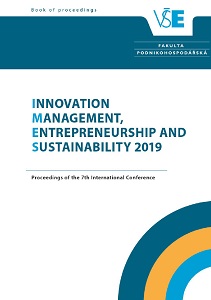Are There Any Economic Impacts of Business R&D
Support? The Case of the Czech Republic
Are There Any Economic Impacts of Business R&D
Support? The Case of the Czech Republic
Author(s): Tomáš Ratinger, Vladislav Čadil, Sylvester Amoako Agyemang
Subject(s): Social Sciences, Economy
Published by: Vysoká škola ekonomická v Praze
Keywords: R&D support; economic impacts; econometric approaches; generalized propensity score matching
Summary/Abstract: Purpose: In recent years, evaluation of economic effects of R&D policies has become a key issue inpolicy debates. This paper contributes to these debates and aims to evaluate impacts of Czechprogramme TIP supporting R&D in private companies on the economic performance of supportedenterprises. The programme running in the period of 2009-2016 targeted on knowledge basedcompetitiveness strengthening through R&D activities.
Design/methodology/approach: The analysis is based on the counter-factual econometric approach.Because an appropriate control group could not be found among the unsupported companies, a so-called generalized propensity score matching (GPSM) was used. Two data sources were used:monitoring data of the TIP programme and economic data from the database Bisnode-MagnusWeb.The impact of R&D support on the firms’ performance was measured by output indicators: grossvalue added, profit and productivity. The analysis covered economic performance of 335 (i.e. 53%of supported firms) in the period of 2009-2015 using 2008 as a base year and 2013-2015 as an endperiod.
Findings: Treatment effects are diverse depending on firm sizes. Generally, the R&D support effectsare positive and more substantial in small and medium firms while there are no such effects confirmedfor large firms. The support could only impact positively on the output (profit, productivity and grossvalue added) of small firms only after reaching a certain minimum threshold of the support whereasoutput diminishes for medium firms after a point of saturation.
Research/practical implications: This paper results could be useful for policymakers and R&Dfunding providers because it provides evidences about microeconomic impacts of programmes,namely it shows the differentiated effects of public interventions in relation to the size categories ofbeneficiaries.
Originality/value: The paper aspires to contribute to the ongoing debate on appropriate quantitativemethods for impact evaluation. The analysis confirms that GPSM approach provides logicaloutcomes and if the investigation is situated to the right time period after the programme isaccomplished it has potential to bring insight in the effects than the standard dichotomous model.
- Page Range: 771-782
- Page Count: 12
- Publication Year: 2019
- Language: English
- Content File-PDF

